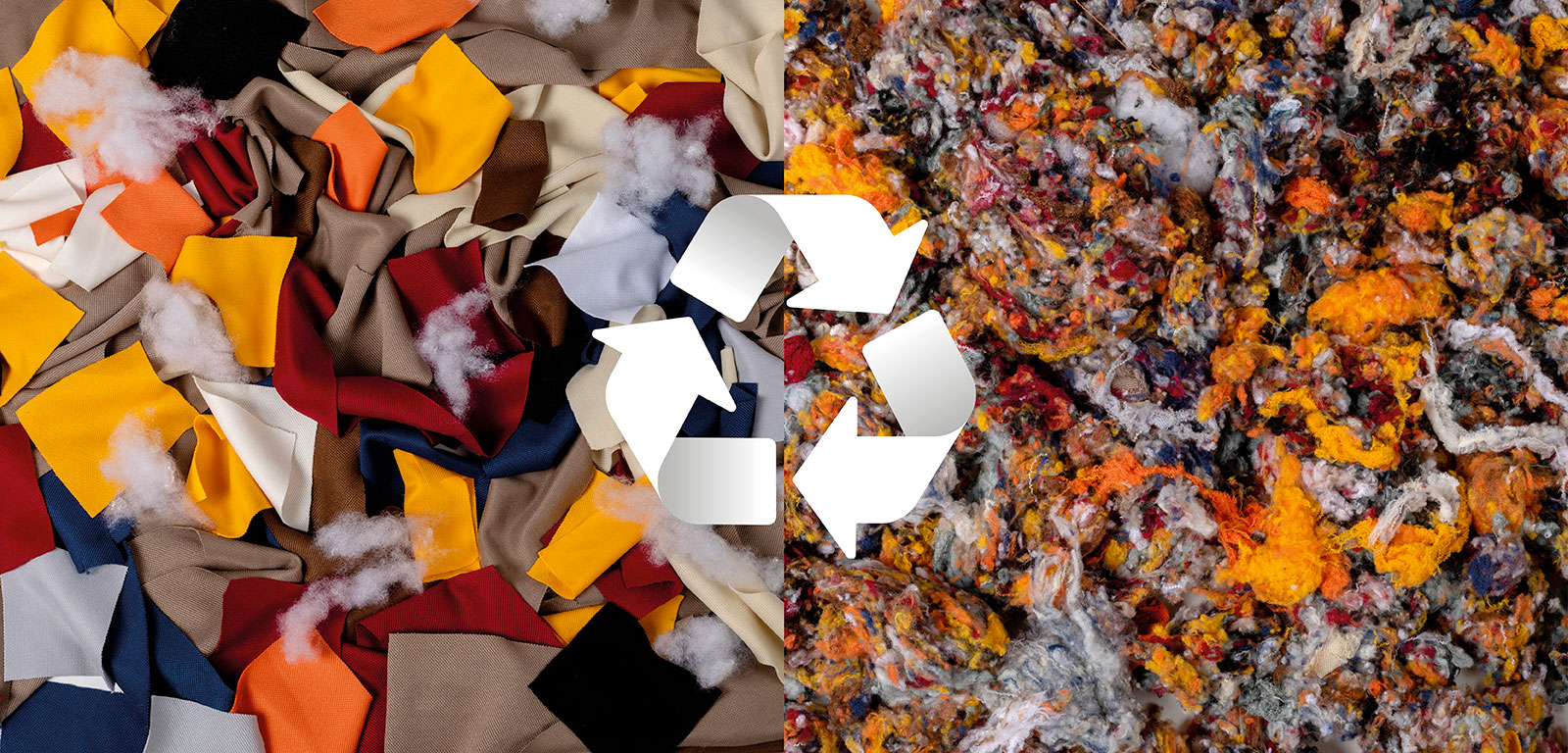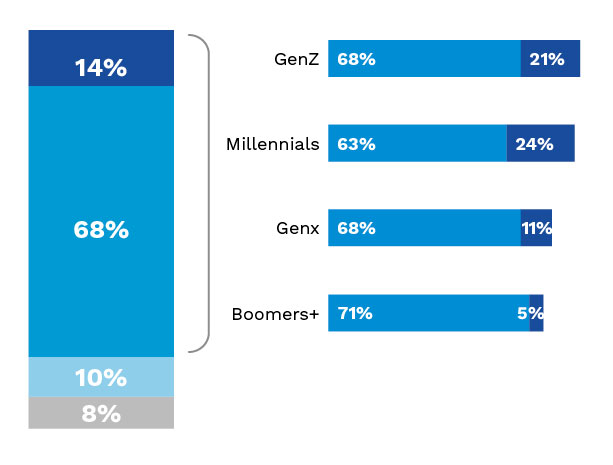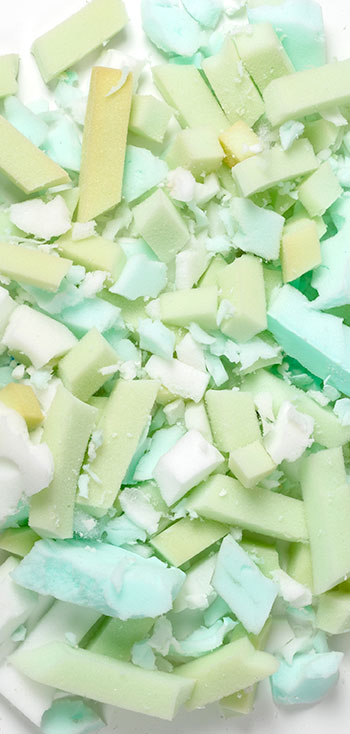STRAIGHT TALK, CIRCULAR ECONOMY.

There is no way around it: sustainability is becoming a real issue for companies in every sector, including in home textile, as the need to promote new ways of thinking about the life of goods and how waste is recycled is becoming more and more urgent. And it is precisely recycling that has been recognized over the years among the top solutions to implement sustainable processes that benefit the planet and its people.
Sustainability no longer means extra expenses. That time is long gone and manufacturers have started to realize that by recycling production scraps they can turn materials they’d otherwise throw away into a new resource for the company, while also promoting sustainable practices that can make a difference at all levels of the supply chain. A win-win.
This focus on sustainability has become a necessity for companies because of the push from both below (the consumers) and above (regulations).
THE TEXTILE SECTOR’S TRANSITION TO A SUSTAINABLE AND CIRCULAR PRODUCTION
All around the world, frameworks are being studied to reduce textile waste and optimize the item’s end of life. Just in the EU, textile waste reaches 5.8 million tons every year (source: A New Textiles Economy: Redesigning fashion’s future), making this sector the fourth highest negative impact on the environment and on climate change. That’s why the textile industry has been identified by the 2020 Circular Economy Action Plan and the 2021 update of the EU Industrial Strategy as a sector with a strong potential for the transition to sustainable and circular production.
A specific framework and a vision for the transition of the textiles sector have been put in place, according to which:
“by 2030 textile products placed on the EU market are long-lived and recyclable, to a great extent made of recycled fibers, free of hazardous substances and produced in respect of social rights and the environment”.
The path has already been traced; although there is still a long road ahead.
In the U.S., the focus is more on mattress recycling, considering that more than 50,000 of them are discarded every single day. That’s why the MRC (Mattress Recycling Council) was created by ISPA to provide resources, education and support to states that have already enacted mattress recycling laws. For over 10 years now, California, Connecticut and Rhode Island have required mattress manufacturers to create specific recycling programs while Oregon, and other states are about to start doing the same. Other initiatives are already being put in place in other places, like the ban on the disposal of mattresses and textiles as trash in Massachusetts (source: https://www.recyclingtoday.com/news/mattress-ban-grants-food-waste-massachusetts-municipal-commercial/).
CONSUMER EXPECTATIONS ON MATTRESSES’ SUSTAINABILITY
On top of the regulatory framework, statistics have shown that consumer expectations are changing and an environmentally conscious company holds more value in the eye of the consumer and reinforces the brand perception: in other words, a sustainable company is more trustworthy.
The Better Sleep Council conducted a new consumer research study, published by BedTimes Magazine (https://mydigitalpublication.com/publication/?m=22801&i=775541&p=22&ver=html5), which shows that most consumers (82%) will consider sustainability when purchasing a mattress: especially Gen Z and Millennials are more likely to buy only sustainable mattresses. More than half (54%) of the younger generations claims that it is very important that the mattress be recyclable at the end if its life. These data show that on top of the overall support for sustainability, with the younger generations this support increases. Sustainability will therefore become an even more pressing issue in the future.
When purchasing a mattress, which of the following best describes your consideration of a mattress that is manufactured using environmentally sustainable practices or materials?

- I will only buy a mattress that is manufactured using environmentally sustainable practices or materials
- I will consider sustainability along with other features that are important to me
- I will not consider sustainability when purchasing a mattress
- None of these
(Base; All Qualified Respondents; N=1005)
WHAT BRIGHI BRINGS TO THE TABLE
Our approach to sustainability ties in well with our drive to work every day to make manufacturing processes savvier and more efficient. At the same time, we always keep in mind what has to be done to protect the planet: it’s necessary to give up a linear economy model where an item is produced-used-discarded in favor of a circular economy model where production scraps are recovered and, ultimately, re-enter the supply chain.
Over the years, we have researched and found ways to recycle foam, fiber and fabric waste to turn it into a new filling material for pillows, cushions, pet beds, mattresses, sofas and much more. This is possible thanks to state-of-the-art machinery like foam shredders that can work with PU waste of different types and densities. The output, shredded foam, can be used both for filling or to produce blocks of rebonded foam, used not only in home textile but also in other sectors, such as automotive and construction. At the same time, our fiber and fabric waste openers can handle production scrap of different types such as non-woven fabric, quilted fabric and thermobonded fabric waste, which, mixed with a minimum percentage of recycled fiber, can reach a high level of resilience and therefore can be used to manufacture high quality products.
What does it mean to choose a circular model for bedding manufacturers?
- Save space by compacting waste.
- Give value to production scraps, which are worth as much as the original raw material. On top of that, it is a material you’d have to pay to get rid of. By reusing it you can attribute the right value and create from a noble material another noble material that you can either use or sell, while reducing the amount of raw materials you purchase.
- Maintain similar features thanks to machines that deliver an output similar to the original material in resilience and consistency.
Choosing Brighi means choosing a better way of heading to the future, prioritizing product quality whilst reckoning with the major role that a sustainable vision has on a successful business model.





